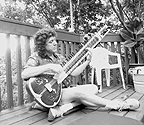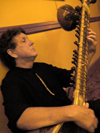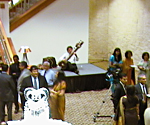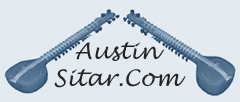
|
||||
|
Introducing the Austin Sitar "Play Along" CD Series! 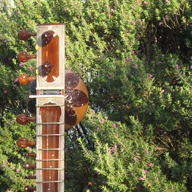
Austin Sitar's Play-Along for The Sitar Vol.1 My new CD is now available on CD Baby.com for purchase or download. Now the sitar player can play along with famous pop/rock songs that have featured the sitar! Many pop songs that have featured the sitar were originally performed in keys that are not natural to the sitar. For example, the song "Norwegian Wood" by the Beatles was originally performed in the key of E. The recording tape was then "vari-speeded" or slowed down, to allow George Harrison to play along with the song on his sitar tuned to C#. Austin Sitar's "Play Along" series features classic music re-performed in the keys of C and C# so that the sitarist needs not retune his/her instrument or have any studio=type technical resources. Sample One - "Scandinavian Furniture" in the Style of "Norwegian Wood" - Click Here! Sample Two - "Om For Sitar" - Click Here! Austin Sitar is a music service offered by Chuck Morrow in the Austin, Texas area. Click Here to E-Mail Me About Booking a Sitar Player or Finding a Sitar Teacher in the Austin, Texas Area - San Antonio, New Braunfels, San Marcos Texas, Wimberley, Fredericksburg, Pflugerville, Round Rock Texas, Georgetown Texas, Even Waco Texas Sitar Player for Weddings or Other Events in Central Texas! Or Call 512-402-5947 Click Here For My Latest Sitar and Tabla Duet - "Wedding Dance" Click Here for Sitar with an "British" Style Pop Band- "Scandinavian Furniture" All Music Copyright 2009 by Chuck Morrow
|
||||
|
||||
|
A Few Words About the Sitar
Click Here to Contact Me With Sitar or Bass Related Questions! Click Here for Links to Quality Businesses You May Also Be Interested In |
